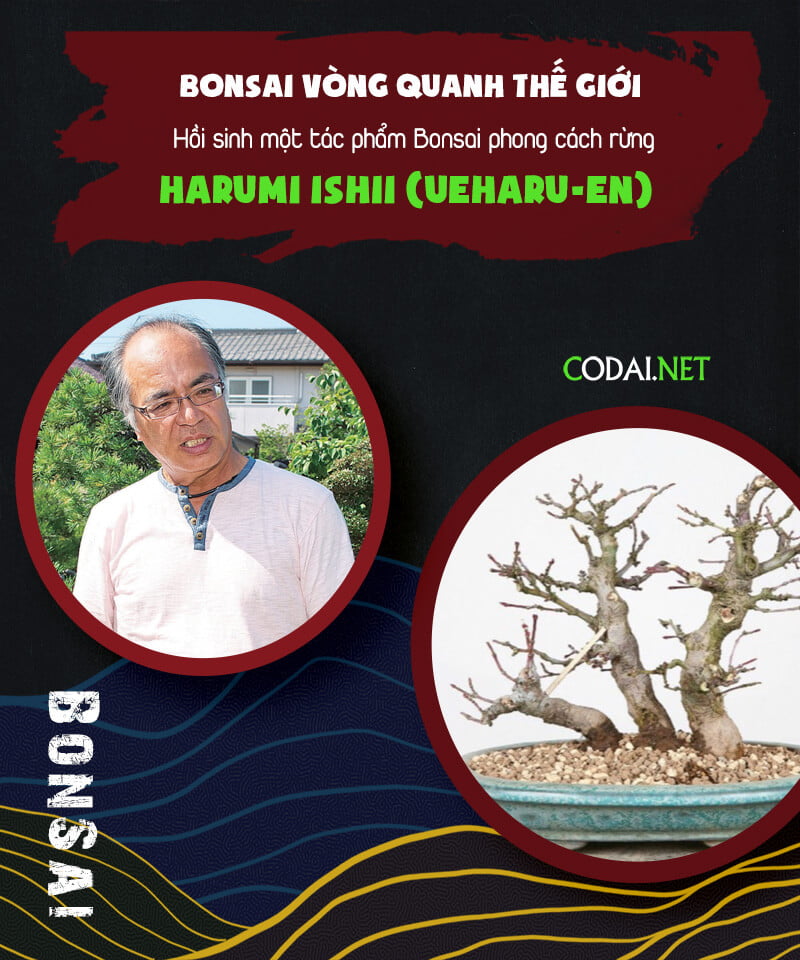Bonsai, Bonsai Focus Magazine, Hành trình - Khám phá, Người nổi tiếng
Bậc thầy Harumi Ishii (Ueharu-En) hồi sinh một tác phẩm Bonsai phong cách rừng
Nguồn: Tạp chí Bonsai Focus English Edition T7/T8 2019
Dịch và biên tập: Dũng Cá Xinh (13/08/2021)
English
5 becomes 2: A boring forest is divided up and receives a fresh remake
- Text and photography: Kinbon magazine, Japan
Harumi Ishii (Ueharu-En) shows us how to transform an uninteresting mountain maple forest into two stunning new
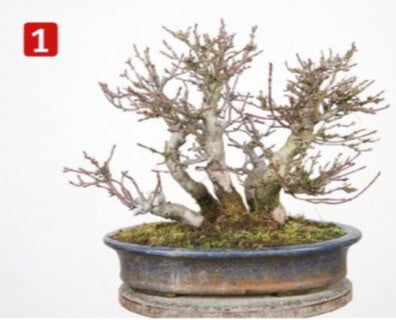
We are separating the trunks into two pieces of material: The initial material is a group planting of Japanese mountain maple. Each trunk has its good and bad points, but as a combination group planting, there is little variation in their thickness. This makes it a group that lacks interest. Looking from the side there are two distinct groups, 3 trees at the front and 2 at the back. This was not done to create depth, but rather so the trunks were not all on top of one another. If it is continued just as it is, the future prospects are poor, so something must be done to improve it.
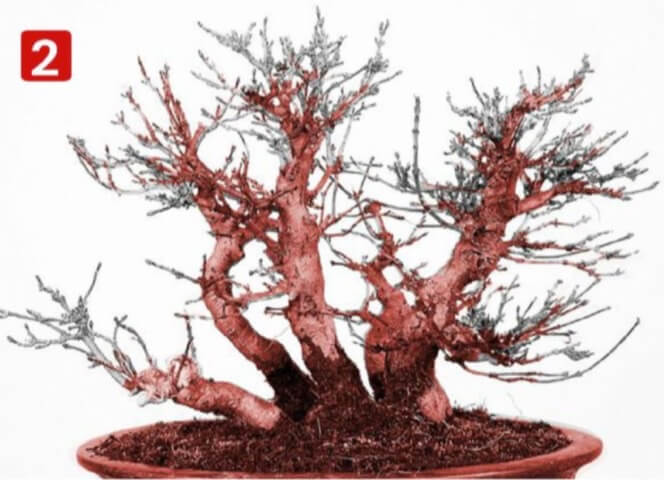
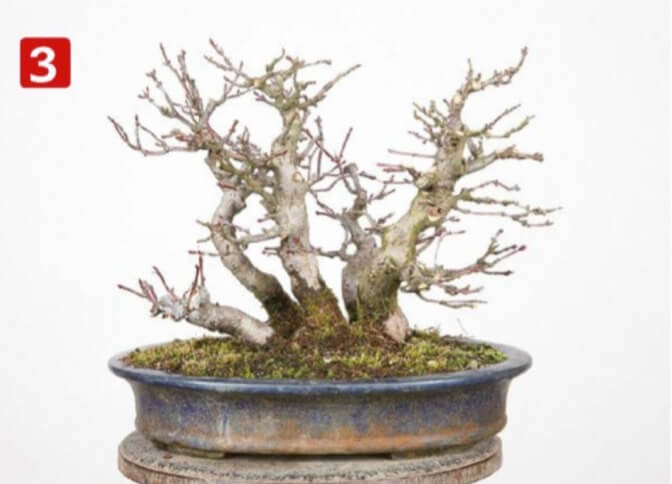
Multiple trunk
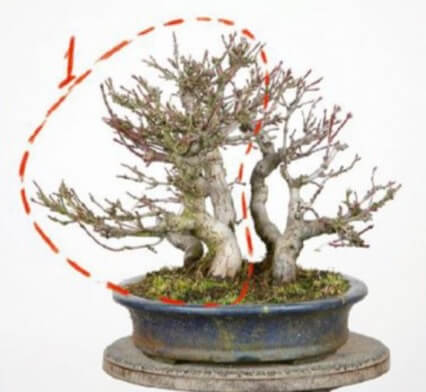 In the case of creating a multiple trunk tree, there will always be good and bad points about the individual trunks, but the fundamental idea is that there should be a difference between the thickness of the trunks. The main trunk should be the thickest with a feel of height to it,. This is followed by a secondary trunk of similar thickness and other trunks significantly thinner and moving outwards in other directions, back and forward to create an optical illusion. This tree was just five trunks of similar thickness put in a pot together, making it difficult to give the impression of a forest.
In the case of creating a multiple trunk tree, there will always be good and bad points about the individual trunks, but the fundamental idea is that there should be a difference between the thickness of the trunks. The main trunk should be the thickest with a feel of height to it,. This is followed by a secondary trunk of similar thickness and other trunks significantly thinner and moving outwards in other directions, back and forward to create an optical illusion. This tree was just five trunks of similar thickness put in a pot together, making it difficult to give the impression of a forest.
Mr Ishii begins by removing the two trunks planted to the rear, which feel somewhat forced, and starting off with a triple trunk tree. With trunks of this thickness, using fewer trunks will achieve some natural balance between them, especially if the smaller of the trees is separated slightly and positioned either slightly towards the foreground or the back. As a triple-trunk tree, it has some future potential.
The remaining two trunks are to be reorganised as a twin trunk
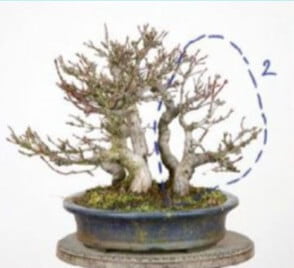 Out of the five original trunks, three were put together as a triple trunk and two left over. They are by no means terrible trees and Mr Ishii decides to reorganise them as a twin trunk.
Out of the five original trunks, three were put together as a triple trunk and two left over. They are by no means terrible trees and Mr Ishii decides to reorganise them as a twin trunk.
One of the most important points when creating a twin trunk is to position the two trunks as close together at the base as it’s possible. As they grow, they will fuse together and become one, making it look much more natural.
In order to this, the roots around the area that is to be joined should be cut back hard so that they fit as closely as possible. Then use a wire to tighten and fix the two trunks together. The wire can be removed the next time it is repotted.
The position of the smallest trunk
Working with the trees from the left side (1)
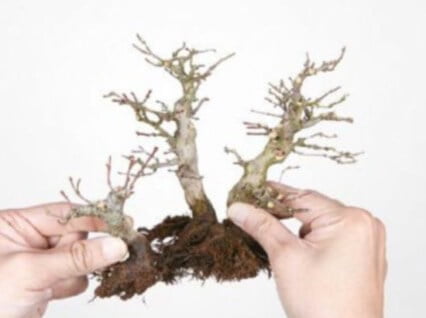
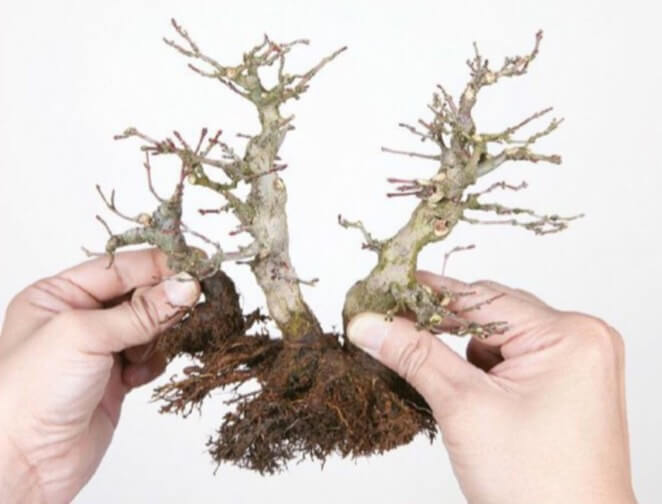
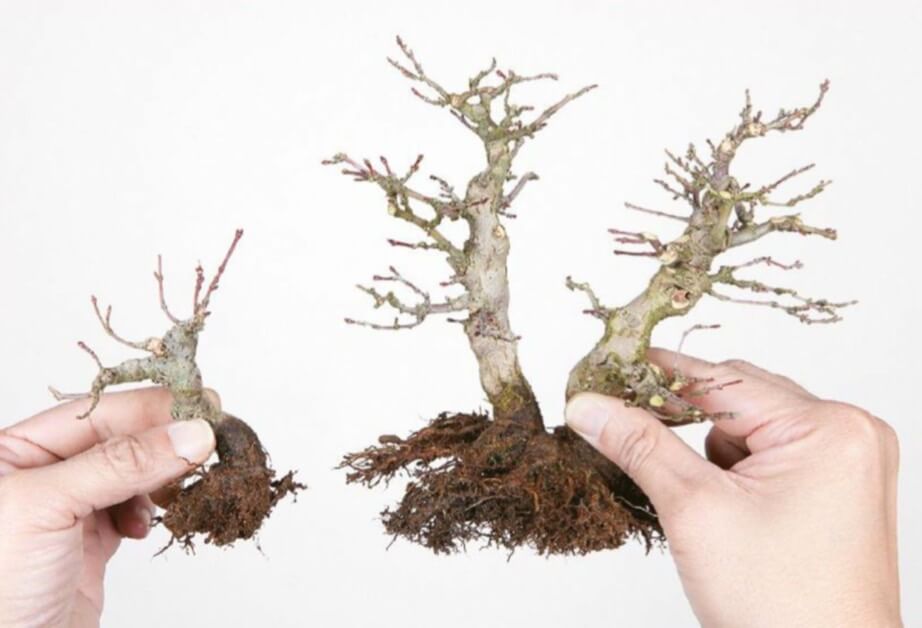
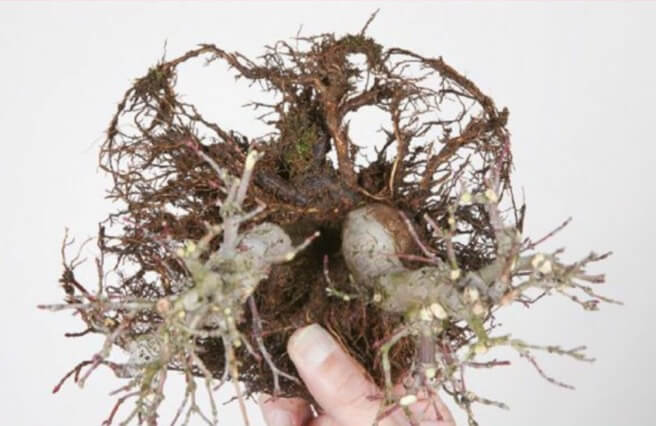
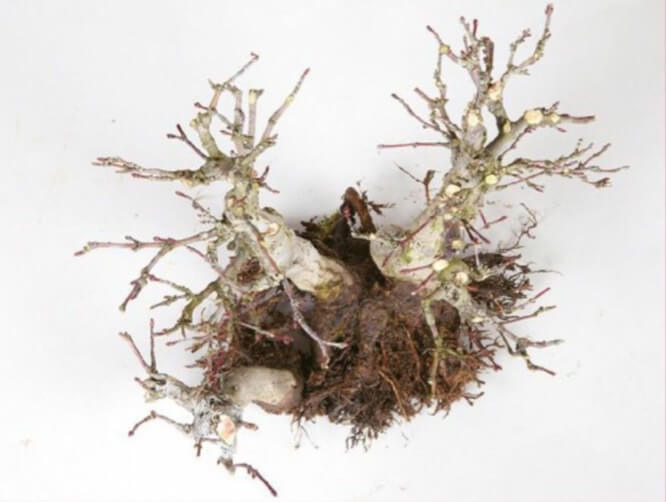
Dealing with the roots and branches in order to fit the two together
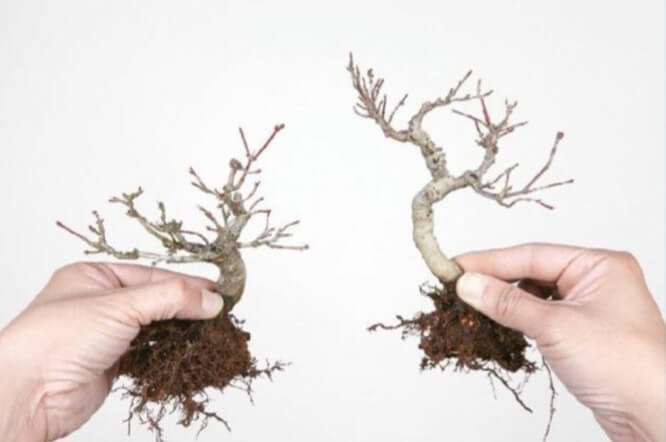
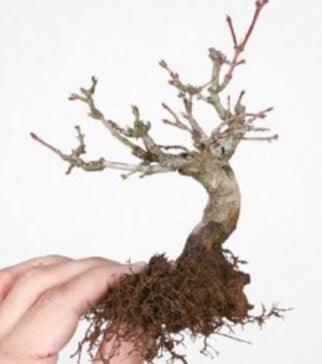
Fit the two trunks together tightly and fix in place
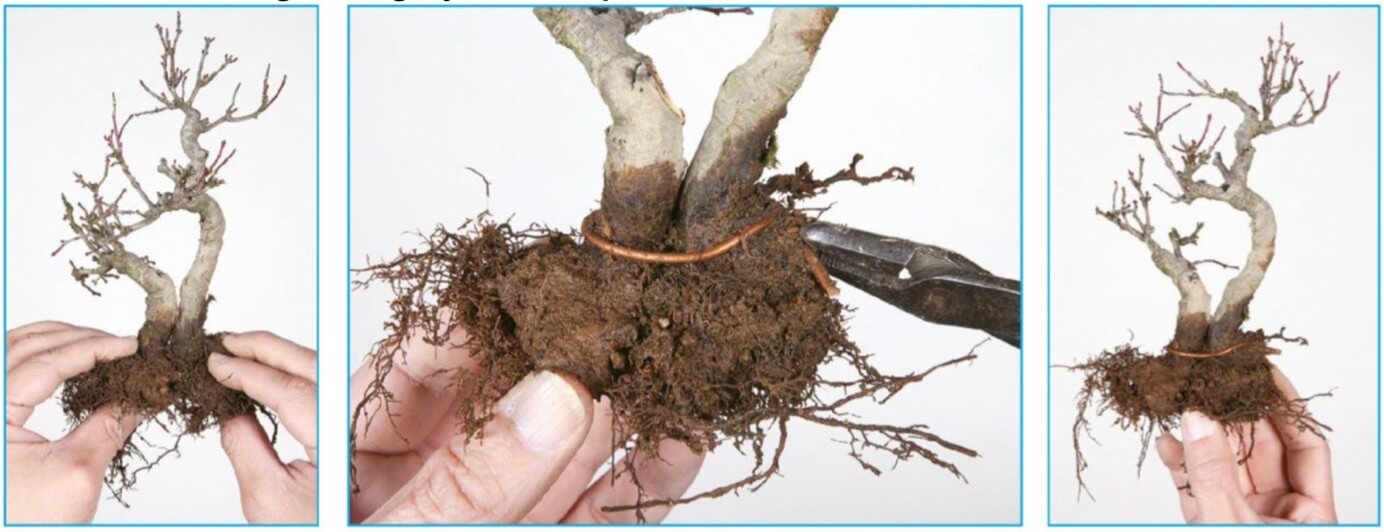
- Fit the two together and check the balance
- In order to show off the twin trunk at its best, the two trunks are tied together at the base
- After fixing. The wire should be removed at the next repotting before it causes any damage
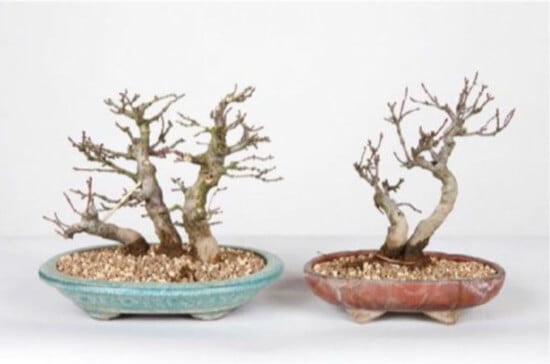
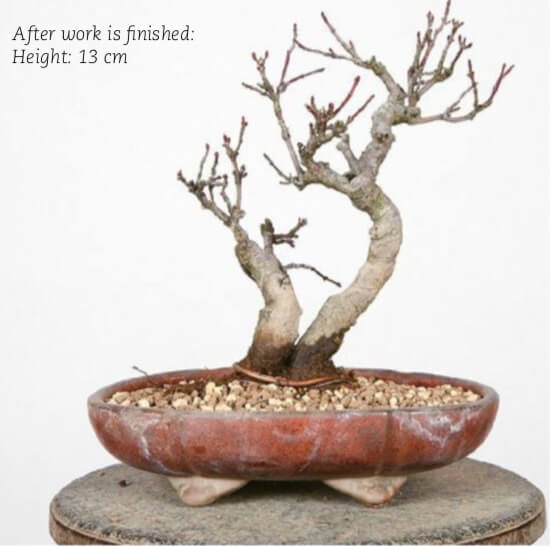
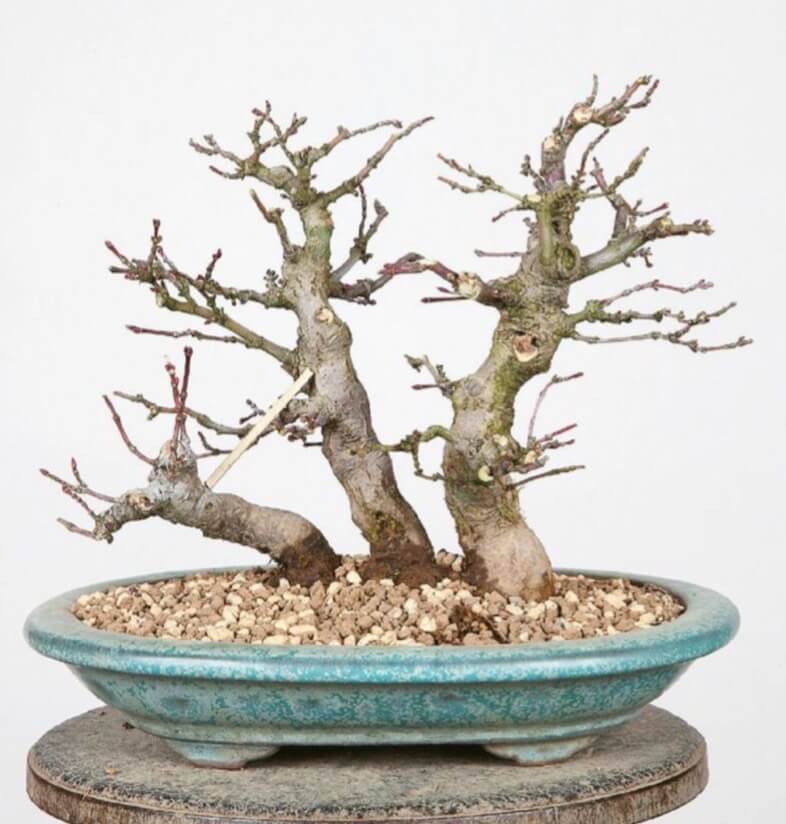
Tiếng Việt
5 thân trở thành 2 tác phẩm Bonsai: Một khu rừng nhàm chán được chia ra và được hồi sinh lại
- Ảnh và bài viết: Kinbon magazine, Japan
Bậc thầy Bonsai Harumi Ishii (Ueharu-En) hướng dẫn cho chúng ta cách biến một khu rừng Phong Núi (Mountain maple) nhàm chán thành hai khu rừng mới tuyệt đẹp

Chúng tôi đang tách các thân cây thành hai tác phẩm riêng biệt: Vật liệu ban đầu là một nhóm 5 cây Phong núi Nhật Bản (Japanese mountain maple, Acer palmatum, irohamomiji,, momiji) được trồng theo phong cách rừng. Mỗi thân cây đều có điểm cộng và điểm trừ, nhưng do cách trồng theo nhóm kết hợp, độ dày của chúng không có sự khác biệt. Điều này làm cho tác phẩm trở thành một khối kém hấp dẫn. Nhìn từ bên cạnh có hai nhóm rõ ràng, 3 cây ở phía trước và 2 ở phía sau. Điều này không được thực hiện để tạo ra chiều sâu, nhưng đúng hơn là do đó, tất cả các thân không nằm chồng lên nhau. Nếu cứ tiếp tục như hiện tại thì triển vọng trong tương lai rất kém, vì vậy cần phải làm gì đó để cải thiện nó.


Đa thân

Trong trường hợp trồng Bonsai theo dáng Đa Thân, sẽ luôn có điểm cộng và điểm trừ cho các thân cây riêng lẻ, nhưng ý tưởng cơ bản là cần có sự khác biệt giữa độ dày của các thân cây. Thân cây chính nên dày nhất để tạo cảm giác cao hơn so với phần còn lại. Tiếp theo là một thân cây thứ cấp có độ dày tương tự và các thân cây khác mỏng hơn đáng kể và di chuyển ra ngoài theo các hướng khác, lùi và về phía trước để tạo ra ảo ảnh quang học. Tác phẩm này thực ra chỉ là năm thân cây có độ dày tương tự nhau được đặt trong một chậu cây nên khó có thể tạo ra ấn tượng về một khu rừng.
Ông Ishii bắt đầu bằng cách loại bỏ hai thân cây được trồng ở phía sau gây cảm giác hơi gượng ép, và bắt đầu với một cây ba thân. Với những thân cây có độ dày này, việc sử dụng ít thân cây hơn sẽ đạt được sự cân bằng tự nhiên giữa chúng, đặc biệt nếu những cây nhỏ hơn được tách ra một chút và được định vị hơi hướng về phía trước hoặc phía sau. Là một cây ba thân, nó sẽ có một số tiềm năng trong tương lai.
Hai thân cây còn lại sẽ được trồng lại thành một cây song thân

Trong số năm thân cây ban đầu, ba thân cây được ghép lại với nhau thành một cây ba thân và sẽ dư hai thân cây còn lại. Chúng hoàn toàn không phải là những cây quá xấu và ông Ishii quyết định sắp xếp lại chúng thành một cây sinh đôi.
Một trong những điểm quan trọng nhất khi tạo một cây thân đôi là đặt hai thân cây càng gần nhau ở gốc càng tốt. Khi chúng lớn lên, chúng sẽ kết hợp với nhau và trở thành một, làm tác phẩm trông tự nhiên hơn nhiều.
Để làm được điều này, phần gốc phải được nối mạnh mẽ để chúng khít nhất có thể. Sau đó dùng dây chun buộc chặt và cố định hai thân cây lại với nhau. Dây có thể được tháo ra trong lần đi dây tiếp theo.
Vị trí của thân cây nhỏ nhất
Làm việc với cây từ phía bên trái





Xử lý rễ và cành sao cho khít với nhau


Gắn chặt hai thân cây với nhau và cố định tại chỗ

- Gắn cả hai lại với nhau và kiểm tra sự cân bằng
- Để thể hiện tốt nhất hai thân cây, hai thân cây được buộc lại với nhau ở phần gốc.
- Sau khi kết nối. Dây nên được loại bỏ ở lần thay chậu tiếp theo trước khi nó gây ra bất kỳ thiệt hại nào



